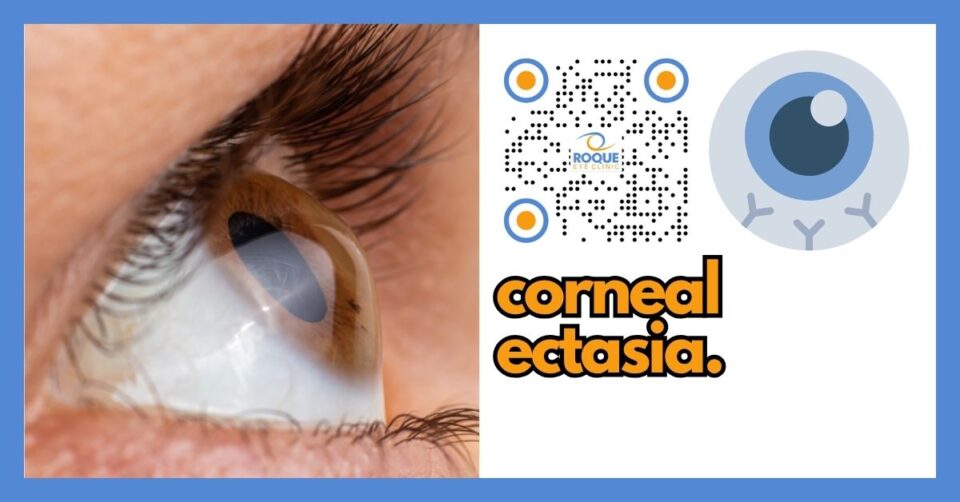ANIMATION
Key Learning Points
- Episcleritis is a common but often misunderstood eye condition that involves inflammation of the episclera, the tissue between the conjunctiva and sclera.
- It presents as a red, painful eye and is often self-limiting, with mild symptoms.
- Treatment focuses on relieving symptoms, and in most cases, the condition resolves on its own.
- In rare cases, episodic inflammation may require medical intervention.
What is Episcleritis?
Episcleritis is an inflammation of the episclera, the thin layer of tissue located between the white part of the eye (sclera) and the clear membrane covering the eye (conjunctiva). Although it can occur at any age, it is more common among adults aged 18 to 40. Episcleritis can affect one or both eyes, and while it can be alarming because of the redness it causes, it is usually a mild condition and does not lead to long-term damage to the eye.
The inflammation causes the episclera to become irritated, and the blood vessels in this area may become dilated and visible, which leads to the characteristic redness or "pink eye" appearance. Despite its discomforting symptoms, episcleritis is not typically associated with serious eye damage or vision loss.
Symptoms of Episcleritis
The most common symptoms of episcleritis include:
- Redness: The most noticeable symptom is a red or pink eye, usually in a localized area. This is due to the dilated blood vessels in the episclera.
- Mild pain or tenderness: Some individuals may experience mild discomfort or soreness in the affected eye. It may feel as though there is something in the eye, though the sensation is usually not as painful as conditions like conjunctivitis or uveitis.
- Itchiness or irritation: The eye may itch or feel irritated, though these symptoms tend to be less intense than those seen with other conditions like allergies or conjunctivitis.
- Sensitivity to light (photophobia): In some cases, individuals may become sensitive to bright lights.
Episcleritis typically does not affect vision, and the symptoms tend to improve within a few days to a couple of weeks without treatment.
Types of Episcleritis
There are two main types of episcleritis:
- Simple Episcleritis: This is the most common form, characterized by a localized area of redness, usually affecting one eye. It is often self-limiting and does not require extensive treatment.
- Nodular Episcleritis: This form involves a raised, firm nodule in the episclera, which can cause more discomfort. It tends to last longer and may require more active treatment.
Both types are generally non-serious, but it is important to differentiate them from more serious conditions, such as scleritis, which can cause more severe pain and potential damage to the eye.
Causes of Episcleritis
In most cases, the exact cause of episcleritis remains unclear, but there are several potential triggers:
- Infections: Viral infections, such as those caused by the herpes simplex virus, may lead to episcleritis.
- Systemic diseases: Conditions like rheumatoid arthritis, lupus, and other autoimmune disorders can increase the risk of episcleritis.
- Allergies: Allergic reactions may contribute to irritation and inflammation in the episclera.
- Trauma or injury: A direct injury to the eye, such as a blow to the face, can lead to episcleritis.
- Idiopathic: In many cases, the cause remains unknown, and the condition resolves on its own.
Treatment Options for Episcleritis
For the vast majority of patients, episcleritis is a self-limiting condition, and the symptoms will resolve without the need for significant treatment. However, if the symptoms are bothersome or persistent, the following treatments may be recommended:
- Lubricating eye drops: Over-the-counter artificial tears can help reduce irritation and dryness in the eyes.
- Anti-inflammatory medications: In cases where inflammation is more bothersome, mild corticosteroid or nonsteroidal anti-inflammatory drugs (NSAIDs) may be prescribed to reduce inflammation.
- Cold compress: Applying a cold compress to the affected eye can help alleviate discomfort and redness.
- Oral medications: In cases of recurrent or more severe episcleritis, your doctor may prescribe oral medications to manage symptoms.
It is important to follow your ophthalmologist’s instructions regarding the use of any prescribed medication, especially corticosteroids, as improper use can lead to complications.
Preventing Episcleritis
While there is no surefire way to prevent episcleritis, some steps can help reduce the risk of developing this condition:
- Avoid eye trauma: Wear protective eyewear during activities that pose a risk of eye injury, such as sports or work with machinery.
- Manage underlying health conditions: If you have a systemic condition like rheumatoid arthritis or lupus, follow your doctor’s advice to manage these conditions effectively.
- Avoid eye irritation: Practice good hygiene, avoid allergens, and minimize exposure to environmental irritants like smoke or dust.
When to Seek Medical Help
While episcleritis typically resolves on its own, you should consult an ophthalmologist if you experience:
- Severe pain in the eye
- Blurry vision
- Prolonged redness that does not improve after a few days
- Sensitivity to light (photophobia) that becomes uncomfortable
Your ophthalmologist will conduct a thorough eye exam and may order tests to rule out other conditions like scleritis or uveitis that could require more aggressive treatment.
Take-Home Message
Episcleritis is a common and often mild condition that causes redness and mild discomfort in the eye. It is usually self-limiting and resolves without the need for extensive medical treatment. If you experience symptoms of episcleritis, you can manage discomfort with simple over-the-counter treatments, and in rare cases, your ophthalmologist may recommend anti-inflammatory medications. If you have a history of autoimmune disease or other systemic conditions, it's important to manage these underlying issues to reduce the likelihood of episcleritis.
Frequently Asked Questions (FAQs)
1. What is episcleritis?
Episcleritis is an inflammation of the episclera, the tissue between the conjunctiva and sclera. It causes redness and mild discomfort in the eye.
2. Is episcleritis painful?
Episcleritis can cause mild pain or tenderness in the affected eye, but the pain is generally not severe.
3. Can episcleritis affect vision?
No, episcleritis typically does not affect vision. It only causes redness and mild irritation.
4. How is episcleritis treated?
Episcleritis is usually self-limiting, but treatments like lubricating eye drops or anti-inflammatory medications can help relieve symptoms.
5. Can episcleritis go away on its own?
Yes, most cases of episcleritis resolve on their own within a few days to weeks without the need for significant treatment.
6. Is episcleritis contagious?
No, episcleritis is not contagious.
7. Can episcleritis be a sign of a more serious condition?
In some cases, episcleritis may be associated with autoimmune conditions. It's important to consult an ophthalmologist if you have any concerns.
8. How long does episcleritis last?
Episcleritis typically lasts from a few days to a couple of weeks.
9. What should I do if episcleritis comes back?
If episcleritis recurs, it is best to consult an ophthalmologist for further evaluation and management.
10. Can episcleritis cause permanent damage?
No, episcleritis usually does not cause permanent damage to the eye.
Bibliography
- Jonas, J. B., et al. (2021). Episcleritis: Epidemiology, Clinical Characteristics, and Management. PubMed.
- Kuo, Y. R., & Yang, C. H. (2019). The Role of Anti-inflammatory Therapy in Episcleritis. Cochrane Library.
- Thomas, S. A., & Handa, A. (2020). Episcleritis and Scleritis: Differential Diagnosis and Treatment Approaches. Ophthalmology Times.
- De Smet, M. D., et al. (2020). Diagnosis and Treatment of Episcleritis. Review of Ophthalmology.
- Hu, J., et al. (2020). Systemic Associations in Episcleritis: A Review of 230 Cases. PubMed.
BOOK AN APPOINTMENT
It takes less than 5 minutes to complete your online booking. Alternatively, you may call our BGC Clinic, or our Alabang Clinic for assistance.






